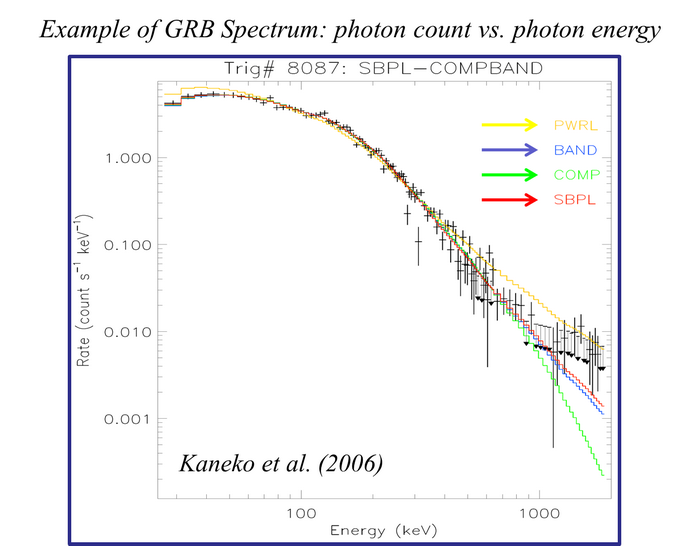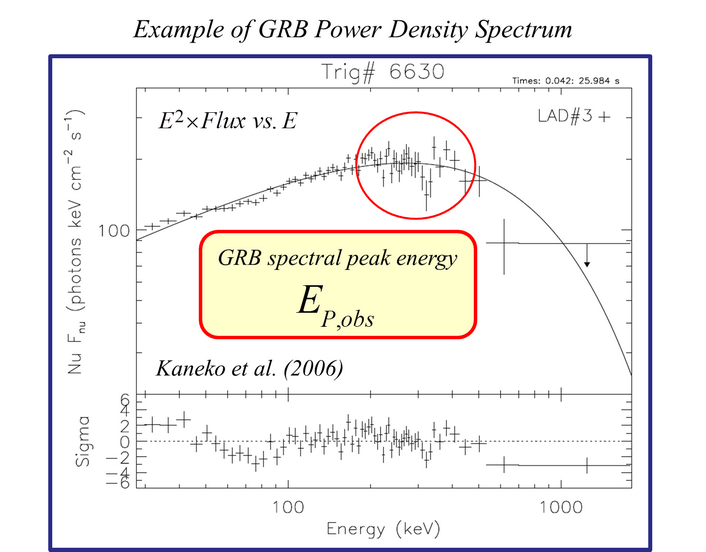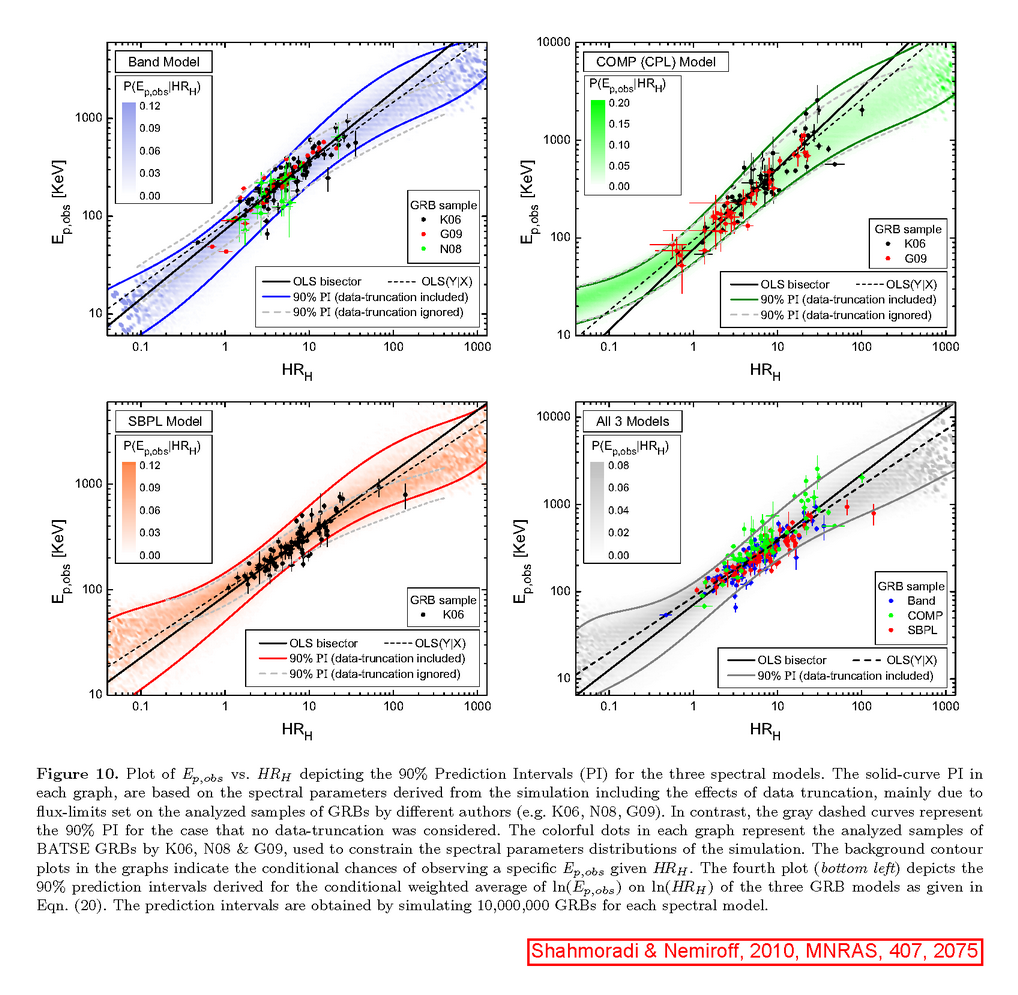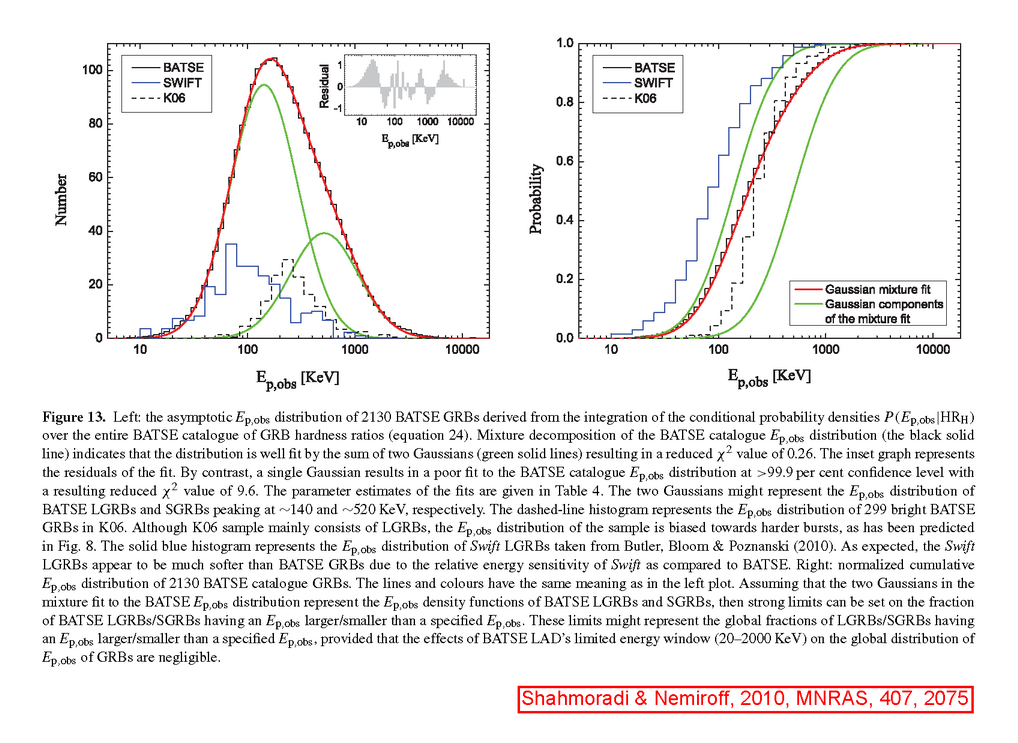Hardness as a proxy for the spectral peak energy of Gamma-Ray Bursts
astrophysics physics research Reference:
– Hardness as a Spectral Peak Estimator for Gamma-Ray Bursts
Available Downloads:
– The spectral peak energy (EP,obs) estimates for 2130 BATSE GRBs can be downloaded from here.
– Conditional EP,obs probability density functions for all bursts can be downloaded collectively as a zip file.
One of the most widely used spectral parameters in the studies of Gamma-Ray Bursts (GRBs) is the time-integrated νFν spectrum peak energy of these cosmic events. Since the early 1990s, there has been a growing trend in the research community to plot GRBs’s spectra in the form of E2 dE or νFν versus energy, (E), where Fν is the spectral flux at the frequency ν. This has the advantage of making it easy to discern the energy of the peak power from the burst. The νFν plot of many of the bursts’ spectra shows a peak which is denoted by EP,obs where the subscript “P,obs” stands for OBServer-frame spectral Peak energy (in contrast to the Comoving-frame Peak energy).
Now, it turns out that measuring of this quantity (i.e., the spectral peak energy) for many GRBs in particular those with very low Signal-to-Noise Ratio (SNR) – is a challenging task for GRB astronomers. This is primarily due to the fact that most GRBs do not have high quality spectral data enough to fit and constrain all the parameters of GRB spectral models (in particular the Band Spectral model). Therefore a lot of GRBs detected by the gamma-ray satellites are generally excluded in spectral analysis. For example, by the year 2008, the spectra of only 350 out of 2704 GRBs detected by BATSE Large Area Detectors on board CGRO satellite had been analyzed in detail using a variety of spectral models (e.g., Kaneko et al. 2006). These 350 GRBs were especially bright to allow for accurate spectral analyses, selected according to some researcher-defined inclusion rules, such as requiring a minimum flux or signal-to-noise ratio. Such inclusion rules, of course, may carry significant limitations and biases (e.g., Shahmoradi & Nemiroff, 2009, Shahmoradi & Nemiroff 2011).
On a regular winter day of 2008, professor Nemiroff & I were thinking of finding an easy way to measure the peak energies (EP,obs) of Gamma-Ray Bursts without having to go through the hassle of spectral fitting: To find another spectral parameter of GRBs that would serve as a proxy for EP,obs</font> of the bursts. Based on Dr. Nemiroff’s original suggestion to use hardness as EP,obs proxy, it turned out that a new definition of GRB hardness could indeed serve as a good indicator of the spectral peak energy of the bursts. The correlation of EP,obs and GRB hardness had been long known. However, our rigorous analysis allowed for the first time to quantify this correlation and use it to estimate the peak energies of the entire catalog of BATSE Gamma-Ray Bursts: 2130 GRBs.
Here is an example plot of the “Hardness – EP,obs” correlation taken from Shahmoradi & Nemiroff (2010):
Perhaps more important than the correlation itself, was the (re)discovery of the two classes of Short-duration GRBs (SGRBs) and Long-duration GRBs (LGRBs) by the double-component shape of the EP,obs distribution of BATSE 2130 GRBs:
For the first time in GRB research history, the Hardness-EP,obs relation enabled us to unravel the potential shape of the EP,obs distributions of the two classes of GRBs in the largest catalog of GRBs available to date (as of August 2012). The above plot clearly shows that the EP,obs distribution of 2130 BATSE GRBs is likely the result of the superposition of two Gaussian components, with long-soft class of BATSE GRBs having a Gaussian EP,obs distribution centered at ~140 keV and short-hard class of BATSE GRBs having a Gaussian EP,obs distribution centered at ~520 keV. Also according to the observed ratio of the two Gaussian components of the BATSE EP,obs distribution in the plot above, ~%70 of BATSE GRBs belong to long-soft class of bursts (LGRBs) and ~%30 of BATSE GRBs belong to short-hard class of bursts (SGRBs).



